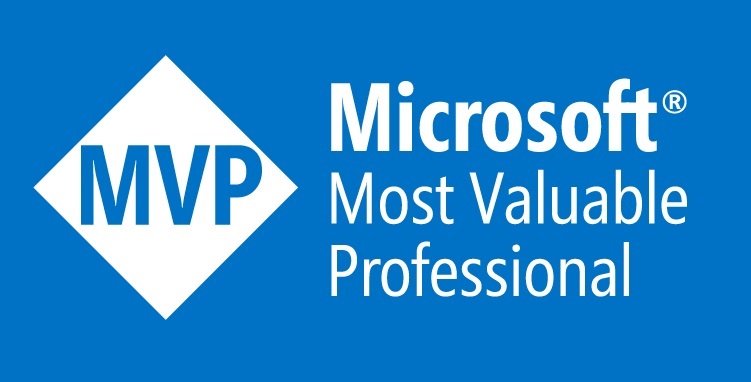Azure Automation Run As Account will retire on 30 September 2023
https://learn.microsoft.com/en-us/azure/automation/migrate-run-as-accounts-managed-identity
TLDR (permissions/authorization/authorization object)
And below long and boring 😉 version:
Authorization principles (in Azure)
Managed identities that are added to database or server roles will be unable to login to the service or do any operations.
Managed identities for service principals are not supported in Azure Analysis Services.
(SOURCE) – managed identities on database or server roles
Prerequsites:
MANAGED IDENTITY
Connect-AzAccount -Identity -AccountId <yout_Cilend_ID>
Service Principal (app registration)
- app ID
- Tenant ID
- Secret Value (that needs to be rotated periodically!)
More information you can find in the official documentation:
Quickstart: Register an application with the Microsoft identity platform
Authorization Flow
Authorization for Azure Analysis Services (database operations)
Pre-requirements:
app: <AppID>@<tenantID>
It will look like the screenshot below in Azure Analysis Services (the Azure portal).
3. Grant the RBAC Role “Key Vault Secrets User” (or Reader) access to the Managed Identity of the Automation Account on Azure Key Vault. If granting access at this level is too permissive, consider making a grant on individual secrets.
Flow diagram:
Point 1) was completed in PreReq
For the second step, you have two options to save the mentioned app ID and secret:
- Key Vault (preferred option)
- Automation Account Credentials
Now, for the third step, you’ll need to authenticate using PowerShell to Azure with User Managed Identity (UMI) and connect to Key Vault. If you have any specific questions or if you’d like assistance with the PowerShell script, feel free to provide more details!
Connect-AzAccount -Identity -AccountId $UmiClientID
Where $UmiClientID is your Managed Identity Client ID
4) Retrieve the app ID and secret from Key Vault using Managed Identity and store them as PSCredential object.
$appId = Get-AzKeyVaultSecret -VaultName $KVaultName -Name $KVAppID -AsPlainText $appSecret = Get-AzKeyVaultSecret -VaultName $KVaultName -Name $KVAppSecret -AsPlainText
Where $KVaultName is a variable that refers to your Key Vault name and $KVAppID are variables that refer to Key Vault entry names.
- Store App ID and Secret as PSCredentails
$appSecret = ConvertTo-SecureString -String $appSecret -AsPlainText -Force $_Credential = New-Object System.Management.Automation.PSCredential $appId, $appSecret
5) Refresh Partitions / Tables using Invoke-ASCmd
Invoke-ASCmd `
-Database $CatalogAAS `
-Server $ServerAASAdress `
-ServicePrincipal `
-Credential $_Credential `
-Query $queryProcess
Where
- $CatalogAAS – is AAS Database Name (e.g. MyDatabse)
- $ServerAASAdress – is Full AAS server Address (e.g. asazure://westeurope.asazure.windows.net/devtabular01)
- $_Credential – credentials defined in point 4)
- $queryProcess – is query (JSON) that contains refresh information
Authorization for Azure Analysis Services (Service Operation)
For operations on the control plane, such as scaling Azure Analysis Services, the process is simpler. Instead of requiring a Service Principal, you need to grant the RBAC role on the Azure Access Control blade. The role options include:
- Contributor (built-in role)
- Custom role with required AAS privileges, such as:
- Microsoft.AnalysisServices/servers/read
- Microsoft.AnalysisServices/servers/write
- Microsoft.AnalysisServices/servers/suspend/action
For more information on creating custom roles, you can refer to the documentation provided:
Azure resource provider operations
Diagram Flow:
- We log in to Azure using Managed Identity:
Connect-AzAccount -Identity -AccountId $UmiClientID
- We execute scaling tabular:
Set-AzAnalysisServicesServer -Name $analysisServerName -ResourceGroupName $resourceGroupName -Sku $sku
Where the variables refer to:
- $analysisServerName: name of tabular (last part after /, not full server uri) e.g. “demotabular“
- $resourceGroupName: tabular resource group name e.g. “DEMO-DEV-AAC-RG“
- Sku: Sku from pricing tier e.g. “S2”
NOTE: Remember that the context of execution needs to be the tenant and subscription of your AAS service.
Authorization for Azure SQL Server
Authorization for managed identity is supported in SQL Server, but we must take an additional step if we want to use Invoke-Sqlcmd => get a token for Managed Identity for an Azure SQL Server resource.
Pre-requiremnts:
You have to create USER in SQL database and grant privileges (or role) to perform the necessary actions.
Example:
CREATE USER [my-user-managed-identity-name] FROM EXTERNAL PROVIDER; ALTER ROLE db_datareader ADD MEMBER [my-user-managed-identity-name];
That will allow managed identity to log in to the SQL database and perform any operation that is allowed by role [db_datareader].
Flow diagram:
We need to retrieve a token from Azure AD using the following code:
$resource= "?resource=https://database.windows.net/"
$client_id="&client_id=$UmiClientID"
$url = $env:IDENTITY_ENDPOINT + $resource + $client_id
$Headers = New-Object "System.Collections.Generic.Dictionary[[String],[String]]"
$Headers.Add("Metadata", "True")
$headers.Add("X-IDENTITY-HEADER", $env:IDENTITY_HEADER)
$accessToken = Invoke-RestMethod -Uri $url -Method 'GET' -Headers $Headers
Where $UmiClientID is our Mnaged Identity Client ID.
- We execute queries using Invoke-Sqlcmd, passing an access token:
$serverId = Invoke-Sqlcmd `
-ServerInstance $SQLServerName `
-Database $SQLDBName `
-AccessToken $accessToken.access_token `
-Query $querySQLaboutInstance
Where $SQLServerName is name of Azure SQl Server Name $SQLDBName is SQL Database Name and $Query is query we want to execute on SQL Server e.g. :
SELECT MAX(exec_time) from tech.audit_execution
Environment Separation
I’ve configured a single automation account with three User Managed Identities (UMIs). In my code, I pass the $Environment variable during execution, dynamically assigning the UMI Client ID based on the provided parameter value
if ($Environment -eq "DEV")
{
$UmiClientID = "xxxxxxxx-xxxx-xxxx-xxxx-xxxxxxxxxxxx"
}
elseif ($Environment -eq "UAT")
{
$UmiClientID = "yyyyyyyy-yyyy-yyyy-yyyy-yyyyyyyyyyyy"
}
elseif ($Environment -eq "PROD")
{
$UmiClientID = "zzzzzzzz-zzzz-zzzz-zzzz-zzzzzzzzzzzz"
}
Diagram:
Thank you for reading! Please help me enhance the quality of my post as this is my first one. Feel free to share your comments and thoughts.
See you in the next article about DATA in AZURE 🙂
- Understanding CLONE Functionality in Databricks for Delta Tables - March 1, 2024
- Incrementally loading files from SharePoint to Azure Data Lake using Data Factory - December 18, 2023
- Azure Automation – Run As Account migration plan - November 19, 2023













Last comments